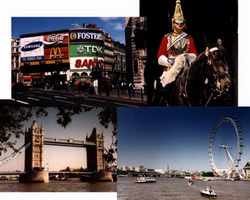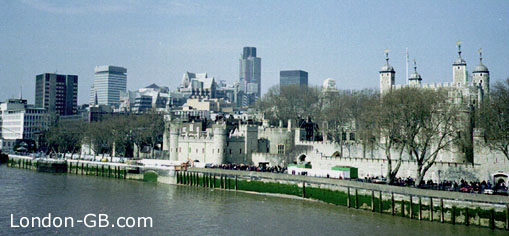

London, the thriving capital of Great Britain, lies astride the river Thames. It was founded by the Romans as Londonium and by the time of the Norman conquest in 1066 had become an important political city. Once the industrial commercial and political center of a wealthy and extensive empire, London today continues to be the largest port and the leading center of international trade, finance and culture in the United Kingdom.
Like many large cities world wide,
London has its share of problems: overcrowding, unemployment and homelessness
being some of the main ones. In 1988, for example, nearly 1 in 8 people
were unemployed throughout London and the situation in the inner city was
worst. Transportation is another problem. However, an excellent public
system has helped to alleviate some of this.

The city is famous today for its parks and gardens, and is also a cultural haven for the world. Museums, galleries and theaters abound throughout the city and this, together with its beauty, make London a popular tourist attraction.
Severe social problems do exist in the inner city but have been aided by special programmes aimed at inner city regenration. These programmes have met with only limited success despite the considerable financial resources devoted to them. Conditions in such areas have not improved while in some areas they have actually worsened. More successful has been the government's attempt to encourage grwoth outside London without allowing the city to sprawl into umanageable suburban growth. The result has been the development of five concentrated growth regions that act as a counterbalance to London